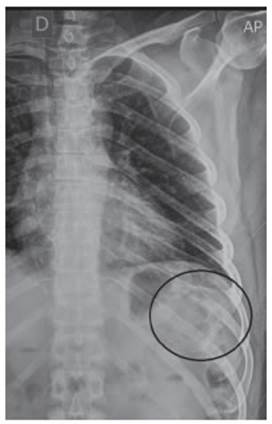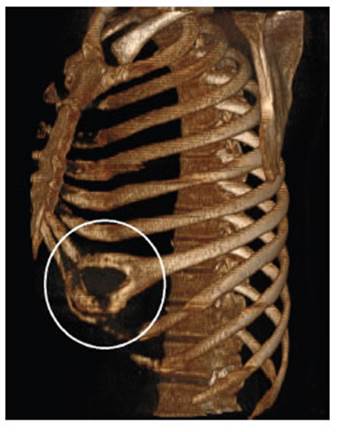A 48-year-old man with left chest pain after a car ac cident 10 days ago. He denied previous illnesses and sur geries. On physical examination, there was no functional limitation. He refers mild chest pain when breathing, re porting improvement with analgesic medication followed by worsening with cough and sneezing. A chest X-ray de tected a bifid rib of the seventh costal arch on the left (Fig. 1), confirmed by computed tomography (Fig. 2). The patient underwent symptomatic treatment - analgesics -with resolution of the pain in seven days.
Bifid rib is defined as a deformity of the chest wall where a costal segment has a different morphology than usual, with its segment split, its origin is congenital, with no associated pathologies are observed. It occurs in less than 2% of the general population, and can rarely cause consequences, because the structural function of the tho racic cage is not compromised, having as its only differ ence its bone architecture, without loss of function. Com puted tomography offers an option for better evaluation, using 3D reconstruction tools, providing a more accurate analysis of costal arch morphology, as shown in Fig. 2. The diagnosis of bifid rib is often made at advanced ages, due to its absence of symptoms and complications, the condi tion often goes unnoticed during life.
















